|
The
Passion of Christ |
|
The
Women at the tomb |
|
The bible narratives tell of
women coming to the tomb of Christ and finding it empty. However, the
four accounts differ greatly, which does not make it easy for artists.
Here’s my attempt at four synopses.
Matthew
Mary Magdelene and ‘the other Mary’ came to the tomb. There was a
great earthquake , and an angel descended and rolled back the stone from
the door, and sat on it. The
‘keepers’ were terrified. The angel tells the women that Christ is
not there – he has risen. The women run to tell the disciples.
Mark
Mary Magdalen, Mary the mother of James, and Salome brought spices to
the tomb. The wondered how they were going to roll away the stone, but
when they reached it this had already happened. The entered, and saw
‘a young man’ in white who told them that Christ was not there, he
was risen. The women rushed
to tell the disciples.
Luke
Mary Magdalene, Joanna, Mary the Mother of James and ‘other women’
brought spices to the tomb and found the stone rolled away. They
entered and were perplexed because there was no body. Then two men in
shining garments appeared and asked the women why they were looking for
the living among the dead., and told them that Christ was risen. They
women told the disciples what they had seen.
John
Mary Magdalene came to the tomb and saw the stone had been rolled away.
She rushed to Simon Peter and ‘the other disciple whom Jesus loved’
(presumably John) and told them that ‘they have taken the Lord out of
the sepulchre’. Peter and John ran to the tomb, John getting there
first. When Peter arrived they went in and saw that Christ had gone,
though they did not yet realise that he had risen as they ‘knew not
the scripture.’
|
|
Most versions are based
on Mark and are known as 'the three Marys at the Tomb' (Salome is also
known as Mary - biblical Marys can be a little confusing.) Why? This may
reflect the importance of the number three in Christian theology. Here
are some examples, starting with two very early images. |
|
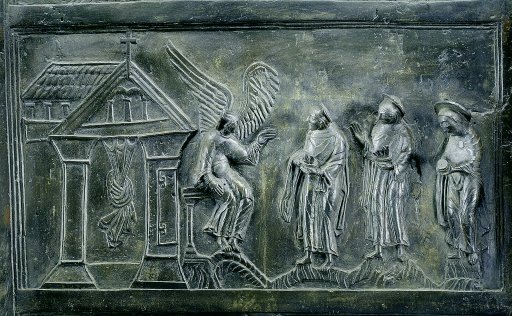
Panel from the Bernward Doors, Hildesheim Cathedral. 1015
|
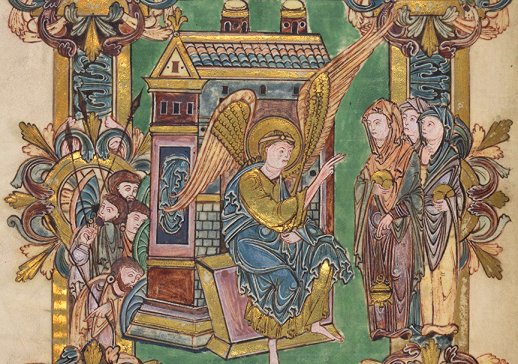
Illumination from The Benediction of St Aethelwold, 963 - 984. British
Library
|
|
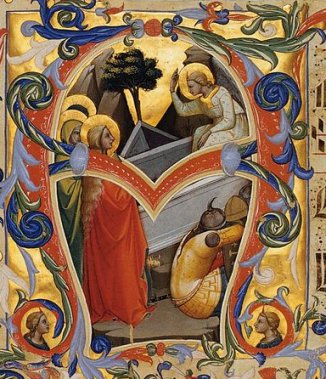
Lorenzo Monaco: Antiphonary, 1396
|
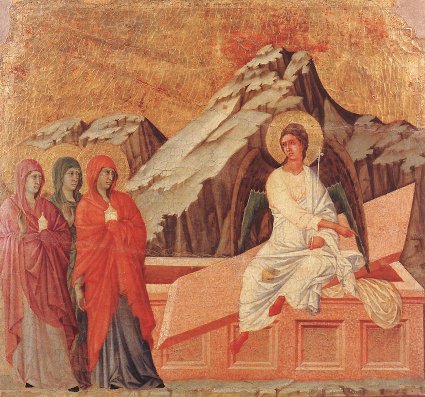
Duccio: from the Maesta, Museo
dell'Opera del Duomo, Siena
|
These images are clearly based on
Mark, though both the Benedictional and the antiphonary add an element
only mentioned by Matthew: The keepers stunned by the apparition of the
angel. They also appear in the painting on the left below, attributed to
Hubert van Eyck, looking like 'dead men' as Matthew puts it.
Fra Angelico takes a different line. He combines the Women at the
Tomb with the Resurrection, and includes more than three women, as
suggested by Luke. |
|
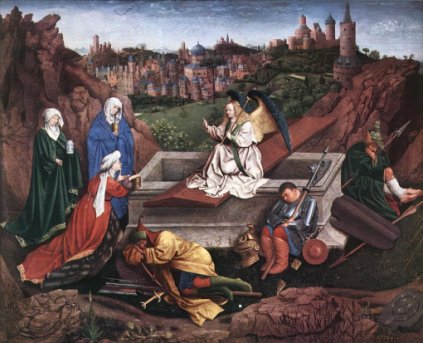
Museum Boijmans Van Beuningen,
Rotterdam
|
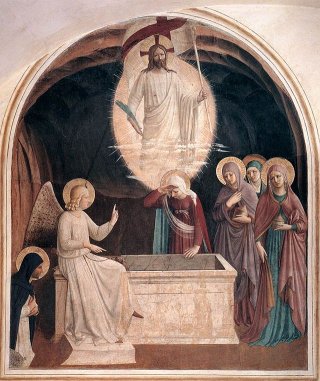
Convento di San Marco, Florence
|
|
|
|
In contrast, these two even earlier
images feature only two women, as in Mathew, but do not include the
Keepers. |
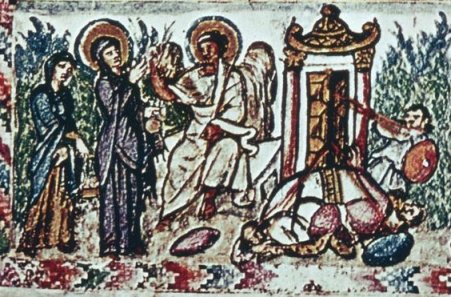
From the Rabbula Gospels, c586. Biblioteca Mediceo Laurenziana,
Florence |
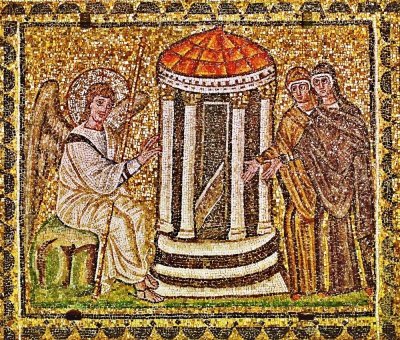
Mosaic, 6th century, Basilica of Sant' Apollinare Nuovo Ravenna
|
Finally, two versions based on Luke, with his two angels. Rubens
(left) also includes 'other women' Jacapo di Cione settles
for three. |
|
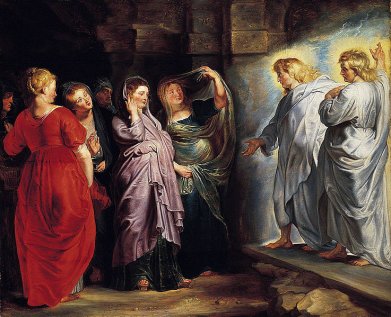
Norton Simon museum,
Passadena
|
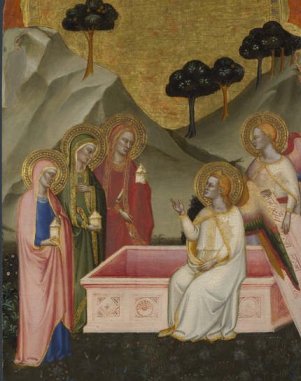
National Gallery. (detail)
|
|
|
|
Passion
index
Home page -
explore the site |









